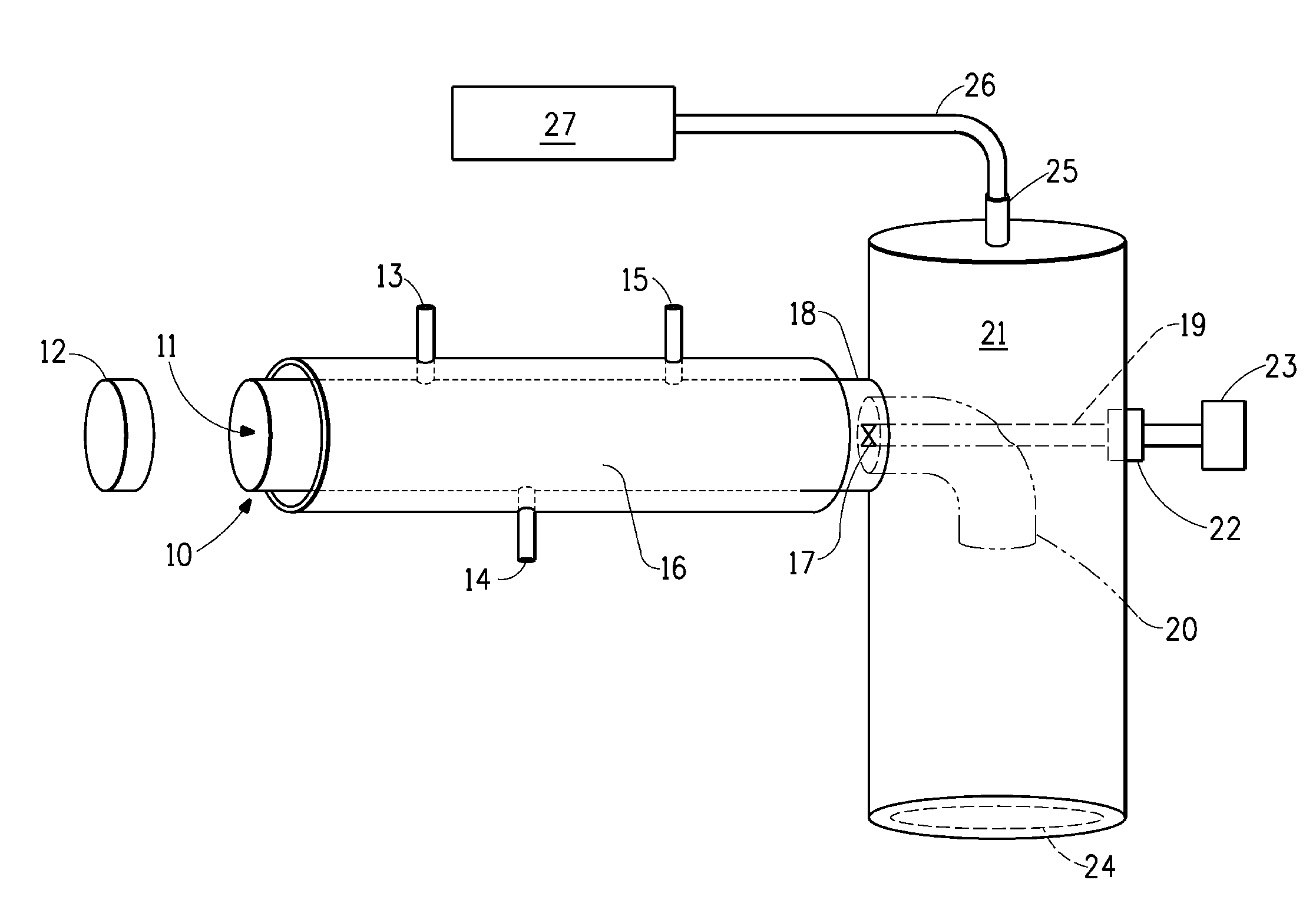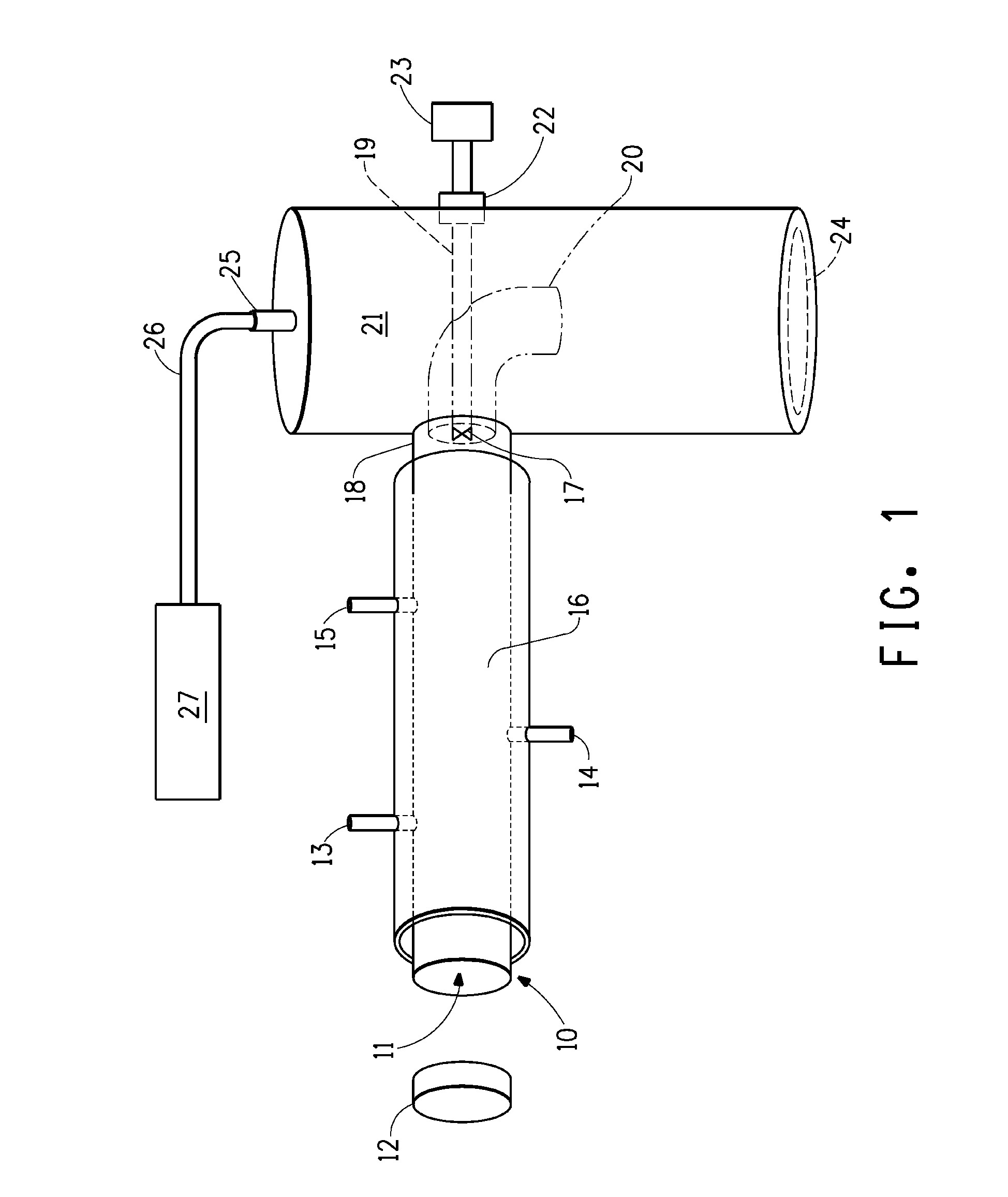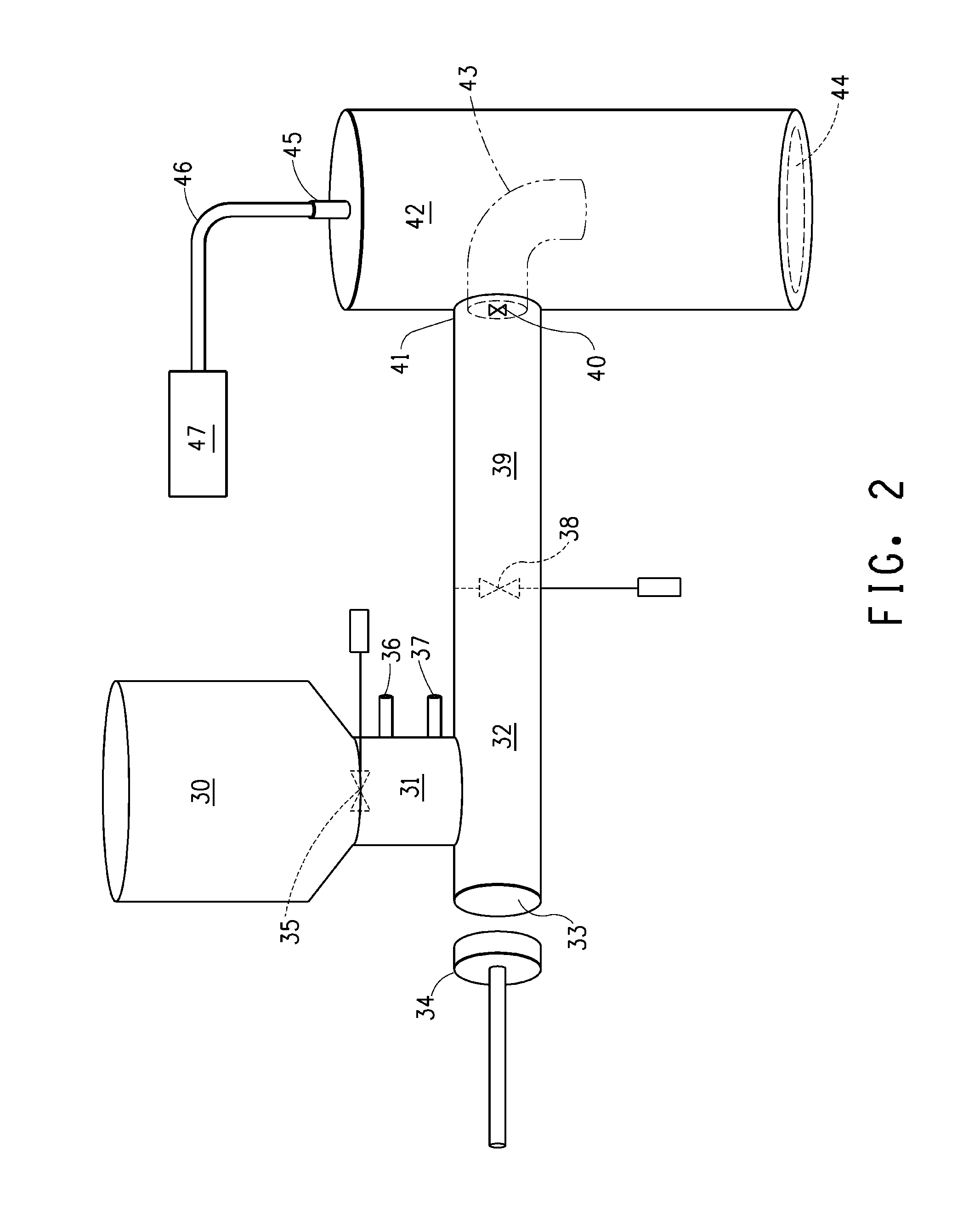Biomass Treatment Apparatus
a technology for treating apparatus and biomass, which is applied in the direction of biochemical apparatus and processes, biomass after-treatment, specific use bioreactors/fermenters, etc. it can solve the problems of not providing an economical process, the use of an extruder in a large scale commercial process is very expensive, and the pretreatment of reactants cannot achieve optimal access, etc., to achieve the effect of increasing the exposed surface area, reducing the size and increasing the accessibility
- Summary
- Abstract
- Description
- Claims
- Application Information
AI Technical Summary
Benefits of technology
Problems solved by technology
Method used
Image
Examples
example 1
Pretreatment of Cob in the Small Barrel Piston Reactor
[0134]Whole corn cobs were processed with a jaw crusher (2.2 kW motor) with a jaw spacing of approximately 0.95 cm, followed by a delumper (1.5 kW motor, Franklin Miller Inc., Livingston, N.J.), followed by screening with a Sweco screen equipped with a 1.9 cm U.S. Standard screen to fracture the whole cobs into smaller pieces. The small barrel piston reactor (described in General Methods) was charged with 115 g (dry weight basis) fractured cobs, by hand placing of cobs into the end of the reactor with the piston removed. The piston was replaced to plug the end. A vacuum was applied to the reactor vessel to bring the reactor pressure to <10 kPa (0.1 bar), and dilute ammonium hydroxide solution was injected to give an ammonia concentration of either 4 g or 6 g per 100 g dry weight of biomass (as given in Table 1) and a dry weight of biomass concentration of 50 g per 100 g total biomass-aqueous ammonia mixture. After the ammonia sol...
example 2
Pretreatment in the Large Barrel Piston Reactor at Different Times
[0136]Steam was added to the jacket of the barrel to preheat the barrel of the large barrel piston reactor (described in General Methods) to ˜130° C. The flash receiver was preheated to ˜60° C. with band heaters. Fractured cobs were prepared as described in Example 1. These cobs (175 g, dry weight basis) were loaded into the large barrel reactor, by hand placing of cobs into the end of the reactor with the piston removed. The piston was replaced to plug the end. A vacuum was applied to the reactor vessel and to the flash receiver to bring the pressure down <10 kPa, and dilute ammonium hydroxide solution was injected into the reactor to give an ammonia concentration of 6 g / 100 g dry weight of biomass and a dry weight of biomass concentration of 45 g / 100 g total biomass-aqueous ammonia mixture. Once the ammonia was charged, steam was injected into the reactor to bring the temperature to 145° C. The mixture was held at t...
example 3
Pretreatment in Large Barrel Piston Reactor Compared to Steam Gun
[0137]Size-reduced cobs were prepared as described in Example 1. Pretreatment in the large barrel piston reactor was carried out as described in Example 2. For pretreatment in the steam gun, cobs were first loaded into a 9-L PEHReactor. The reactor was cooled to 4° C. by rotation in contact with ice on the outer surface. A vacuum was applied to the vessel, and dilute ammonium hydroxide solution that was pre-cooled in a cold room at 4° C. and passed through tubing immersed in an ice-water bath was injected to give an ammonia concentration of 6 g / 100 g dry weight of biomass and a dry weight of biomass concentration of 45 g / 100 g total biomass-aqueous ammonia mixture. The PEHReactor charged with ammonia and cob was cooled to 4° C. by applying ice to the surface of the rotating reactor vessel and rotated at 4° C. for 30 min. At this time the contents were transferred to the steam gun reactor that is described in General Me...
PUM
| Property | Measurement | Unit |
|---|---|---|
| time | aaaaa | aaaaa |
| time | aaaaa | aaaaa |
| time | aaaaa | aaaaa |
Abstract
Description
Claims
Application Information
 Login to View More
Login to View More - R&D
- Intellectual Property
- Life Sciences
- Materials
- Tech Scout
- Unparalleled Data Quality
- Higher Quality Content
- 60% Fewer Hallucinations
Browse by: Latest US Patents, China's latest patents, Technical Efficacy Thesaurus, Application Domain, Technology Topic, Popular Technical Reports.
© 2025 PatSnap. All rights reserved.Legal|Privacy policy|Modern Slavery Act Transparency Statement|Sitemap|About US| Contact US: help@patsnap.com



